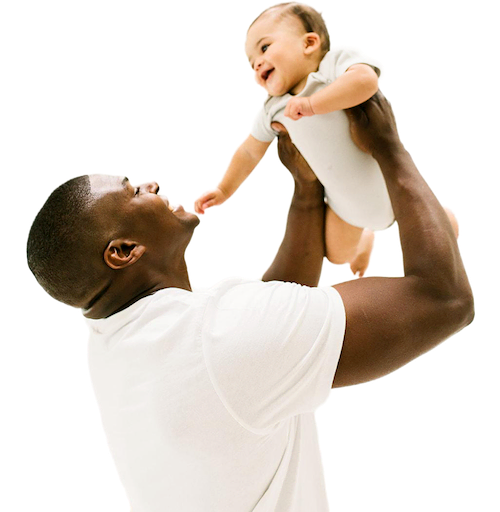Your little one is almost two years old! As your toddler is entering this new stage, sleep may look a little different, but it’s still so important! Let’s talk about your most frequently asked questions about 23 month old sleep schedules, naps, regressions, and more.

The 5–24 Month Collection
stars ( reviews)
If sleep is challenging at 23 months, my 5-24 Month Collection will help. I’ll teach you a customizable, step-by-step plan to achieve independent sleep for nights and naps while remaining emotionally connected to your little one. You’ll have the confidence to handle bedtime battles, separation anxiety, illness, and any other bump along the way.
Learn MoreWhat are wake windows for a 23 month old? anchor
For a 23 month old, wake windows are about 4-6 hours.
When setting up a daily routine for your 23 month old, aim for:
About 5-6 hours after Wake Time = Nap
About 4-5 hours after the end of the Nap = Bedtime
How long should a 23 month old nap? anchor
Around 23 months, we want to aim for one consolidated nap lasting 2-3 hours. If you get to the 3 hour mark and your toddler is still asleep, it’s time to wake them. This keeps bedtime in the sweet spot of 7:00-8:00 pm and allows for enough active awake time to preserve great night sleep.
If 2-3 hours of daytime sleep seems like a dream, I can help with those short naps or nap refusals. Know that if you continue to struggle, my Toddler Sleep Training will help you understand this new developmental stage so that you can set your days and nights up for sleep success.
23 Month Sleep Schedule Guidelinesanchor
Every little one is unique and your toddler’s day will depend on when they wake, how long they nap, and individual cues. Try aiming for these age-appropriate guidelines. These are not intended to be a rigid schedule, simply a guide for setting up a flexible routine.

Text version of 23 month sleep guidelines table
| Daytime Feedings: | 3 meals, snacks as needed |
|---|---|
| Goal Daytime Sleep: | 2-3 hours |
| Sweet Spot Bedtime: | 7:00-8:00 pm |
| Number of Naps: | 1 |
| Wake Windows | 4-6 hours |
For more details on these recommendations, keep reading.
What is a sample schedule for a 23 month old? anchor
Let’s take a look at a sample 23 month old sleep schedule. Keep in mind, this is one example of how a day could play out using age-appropriate wake windows. Your toddler’s day will depend on when they wake, how long they nap, and when they eat.

Text version of 23 month old sample schedule table
| Time | Activity |
|---|---|
| 6:30 am | Wake |
| 7:00 am | Breakfast |
| 9:30 am | Snack/Nursing (optional) |
| 11:45 am | Lunch |
| 12:15 pm -2:30 pm | Nap |
| 2:45 pm | Snack/Nursing (optional) |
| 5:00 pm | Dinner |
| 6:45 pm | Snack/Nursing (optional) |
| 7:15 pm | Bedtime |
How much sleep does a 23 month old need?anchor
Our goal is 12-14 hours of total sleep in a 24-hour period for a 23 month old. We want to aim for 10-12 hours of overnight sleep and 2-3 hours of daytime sleep.
What time should a 23 month old go to bed?anchor
Bedtime between 7:00-8:00 pm is typically the “sweet spot” for 23 month olds. A bedtime in this range tends to help toddlers fall asleep and stay asleep during the night. If your toddler’s bedtime falls outside of this range and sleep is going well, keep doing what works for your family.
If, however, your 23 month old has a bedtime after 8:00 pm and they’re fighting bedtime, waking at night, or rising early in the morning, consider moving bedtime earlier for a couple weeks. Bedtime after 8:00 pm can lead to sleep difficulties for some, so an earlier bedtime may help.
There may also be some days when a bedtime as early as 6:00-6:30 pm can help your toddler sleep well overnight. Here are some reasons you may consider shifting bedtime earlier than 7:00 pm:
A nap was refused or short.
Daytime sleep was less than 2 hours total.
It’s been 4 hours since nap time ended and your toddler is really struggling to make it to bedtime (especially if they’re sick).
What are 23 month old milestones?anchor
Seeing your little one achieve a new milestone is so exciting! Keep in mind these milestones are based on age ranges, and every child develops on their own timeline. Be sure to discuss any questions or concerns about your 23 month old’s development with your pediatrician.
Around 23 months, you may notice your toddler:
Saying more words (50 words by 24 months is the speech milestone for this age). Know that animal sounds, names, and sign language all count as words.
Putting 2-4 familiar words together to make a phrase or short sentence.
Climbing up and down stairs.
Imitating drawing lines and circles when scribbling on paper.
Showing interest in using a potty.
Expert Tip: The combination of growing independence and increased vocabulary around this age often leads to toddlers expressing themselves in new ways, including tantrums. To help minimize tantrums, try offering your toddler choices when you can.
What are some activities for a 23 month old? anchor
Here are some engaging activities to try with your 23 month old:
Play search and find as you read. “Do you see the car on this page?” “Which animal is on the rug?” This can help with language development.
Promote fine motor skills with a threading activity by having your toddler pull pipe cleaners from the holes of a colander. Once they get the hang of pulling, give them a chance to put them through the holes on their own (You’ll probably need to guide them to start.).
Build with blocks- make towers to knock over or whatever they can imagine!
Try to keep a balloon in the air by taking turns batting it around. You can also try kicking for gross motor skill development.
I have some favorite toys for 23 month olds here.
Is there a 23 month old sleep regression? anchor
There can be! Because every child develops at their own pace, it’s possible you may see signs of the 24 month sleep regression at 23 months. Please know, any time your toddler experiences a sudden change in sleep, we always want to start by checking for any physical discomfort, like illness or teething. Once you’re sure that your little one is healthy and comfortable, let’s consider some of the reasons sleep can become more disrupted around 23 months:
Separation anxiety: This could look like your 23 month old standing in the crib in protest, crying when entering their room, or showing a strong preference for one caregiver at bedtime. Validate the feelings, practice short periods of intentional separation, and play games like Peek-a-Boo to help ease separation anxiety at sleep times.
Developmental progression: Your toddler’s new physical abilities as well as their growing vocabulary and imagination can impact sleep. Allowing time to practice new skills during awake time decreases the motivation to do so during sleep time.
Wake windows need adjusting: If your 23 month old is on the lower end of the age-appropriate wake window range, gradually add about 15 minutes to each wake window. Give them a few days to adjust and then reassess- a gradual shift helps prevent overtiredness.
Overtired: If wake windows were recently increased, try decreasing wake windows a bit to see if this helps. Being overtired can make it hard for your toddler to fall asleep and stay asleep.
I know it can be tough when your little one’s sleep changes, but I want to reassure you that sleep regressions are temporary and typically last 1-2 weeks. Keep in mind that letting go of your healthy sleep habits during this time can lead to ongoing sleep struggles. My best advice is to remain consistent with your approach to sleep. You’ve got this!
Is 23 months too late for sleep training?anchor
It’s not! If your 23 month old has always struggled with sleep, I can help you have a great little sleeper. If you’re ready to sleep train, the 5–24 Month Collection will allow you to stay emotionally connected to your little one while following a holistic, fully-customizable plan to help you achieve your family’s goals. I’ll guide you through a step-by-step plan for consolidated nights, solid naps, and handling all the bumps along the way!
Still have a 22 month old? Check out my 22 month sleep schedule.
References
5 Sources
CDC. (2023). Important Milestones: Your Child By Two Years
Mindell et. al. (2008). Developmental aspects of sleep hygiene: Findings from the 2004 National Sleep Foundation Sleep in America Poll
Mindell and Williamson. (2017). Benefits of a bedtime routine in young children: Sleep, development, and beyond
Paruthi et. al. (2016). Recommended Amount of Sleep for Pediatric Populations: A Consensus Statement of the American Academy of Sleep Medicine
Tham, Schneider, and Broekman. (2017). Infant sleep and its relation with cognition and growth: a narrative review
Keep in mind that the information and content on this blog is for informational purposes and should not be considered medical advice. If you have questions about your child, please reach out to your doctor.








